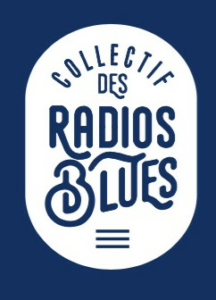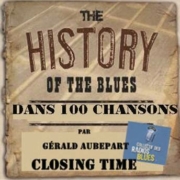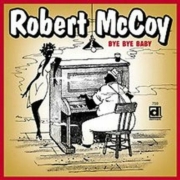Grande Histoire du Blues en 100 chansons
Voici les 100 morceaux les plus célèbres de l’histoire du blues rassemblés par Gérald Aubepart dans l’émission « Closing Time » depuis 1983 sur Radio Primitive à Reims . Gérald Aubepart, notre canal historique nous a quittés le 13 septembre 2016. Toutes les semaines il postait un standard du blues. Voici ce qu’il vous offre, [*mise à jour en cours*] pour compléter ses nombreuses découvertes.

Gérald se rendait très régulièrement aux États-Unis, et tout particulièrement dans le Sud où il aimait dénicher de véritables « pépites » qu’il partageait ensuite avec les auditeurs de son émission qui faisait partie du Collectif des radios blues.
Figure centrale du CRB au sein duquel il a longtemps siégé au conseil d’administration, Gérald était à l’origine d’une initiative très intéressante, une histoire du blues en cent chansons marquantes : chaque semaine depuis environ deux ans, il sélectionnait un titre qu’il mettait ensuite en ligne sur le site du CRB en l’accompagnant d’un commentaire avisé et instructif. Contribuant ainsi à la préservation de la longue et captivante histoire du blues.
Malheureusement, il n’aura pu aller au bout de sa belle idée qui s’est arrêtée il y a quelques semaines après la chanson n° 90, Gérald Aubepart est parti le 13 septembre 2016. Tentons ensemble de terminer la série jusqu’à la centième.
Voici donc les 90 chansons historiques de Blues présentées par Gérald
++++

Surnommée l’Impératrice du Blues, Bessie Smith est la chanteuse de blues la plus populaire des années 1920 et 1930. Elle est souvent considérée comme l’une des plus grandes chanteuses de son époque et, avec Louis Armstrong, une influence majeure sur les autres chanteuses de jazz.
Tous les récits contemporains indiquent que si Rainey ne lui a pas appris à chanter, elle l’a probablement aidée à développer une présence scénique. Bessie Smith a commencé à former son propre groupe vers 1913, au théâtre « 81 » d’Atlanta. En 1920, Bessie Smith avait acquis une réputation dans le Sud et le long de la côte Est.

Les performances de Big Mama Thornton ont été caractérisées par sa voix profonde et puissante et son sens aigu de soi. Elle a puisé dans une personnalité féministe noire libérée, grâce à laquelle elle s’est libérée de nombreuses attentes de la pratique musicale, lyrique et physique des femmes noires.
Dans les années 1970, des années de forte consommation d’alcool ont commencé à nuire à la santé de Thornton. Elle a eu un grave accident de voiture, mais s’est rétablie pour se produire au Newport Jazz Festival en 1973 avec Muddy Waters, B.B. King et Eddie « Cleanhead » Vinson, dont l’enregistrement s’appelle The Blues-A Real Summit Meeting publié par Buddha Records.

« Stagger Lee« , également connu sous le nom de « Stagolee », « Stackerlee », « Stack O’Lee », « Stack-a-Lee » et plusieurs autres variantes, est une chanson populaire basée sur le meurtre de William « Billy » Lyons par Stagger Lee Shelton.
En 1950, une version du pianiste Archibald de la Nouvelle-Orléans atteint la 10e place du Billboard R&B chart, Lloyd Price enregistre la chanson en 1958, et elle atteint le sommet des charts R&B et US pop début 1959.
Herb Wiedoeft et son groupe ont enregistré la chanson en 1924. La version enregistrée par le Mississippi John Hurt en 1928 est considérée par certains commentateurs comme définitive, car elle contient tous les éléments qui apparaissent dans les autres versions.
Avant la Seconde Guerre mondiale, il était communément appelé « Stack O’Lee ». W.C. Handy a écrit que c’était probablement le surnom d’une personne de grande taille, le comparant à la grande cheminée du grand bateau à vapeur Robert E. Lee.
Au moment où W.C. Handy écrivit cette explication dans les années 1920, « Stack O’Lee » était déjà familier dans la culture populaire américaine, avec les enregistrements de la chanson faite par des chanteurs pop de l’époque comme Cliff Edwards. Dans la version de Hurt, comme dans toutes ces pièces, il existe de nombreuses variantes (parfois anachroniques) des paroles. Plusieurs versions plus anciennes donnent le nom de famille de Billy comme « De Lyons » ou « Deslile ».
| |
|

Mississippi John Hurt a commencé à jouer des danses et des fêtes locales tout en travaillant comme métayer. Il a enregistré pour la première fois pour Okeh Records en 1928, mais ces enregistrements étaient des échecs commerciaux.
Le matériel qu’il a enregistré a été réédité par de nombreuses maisons de disques au fil des ans et ses chansons ont été enregistrées par Bob Dylan, Jerry Garcia, Beck, Doc Watson, John McCutcheon, Taj Mahal, Bruce Cockburn, David Johansen, Bill Morrissey, Gillian Welch, Guthrie Thomas, Parsonsfield et Rory Block.

Né à Walnut Ridge, Arkansas et réputé pour être le demi-frère de Big Bill Broonzy, Washboard Sam s’installe à Memphis, Tennessee dans les années 1920, se produisant comme musicien de rue avec Sleepy John Estes et Hammie Nixon.
La planche à laver était l’instrument rythmique de prédilection des musiciens de rue qui jouaient du Blues au début, mais Washboard Sam l’a fait entrer en studio et s’est fait une solide carrière comme musicien de studio à Chicago.
Il avait aussi une voix et un talent d’auteur-compositeur qui lui ont permis d’enregistrer plus de 160 titres en tant qu’artiste solo. Sam était aussi un grand showman et chef d’orchestre, et il pouvait remplir les grands théâtres avec des fans de sa musique du bon temps.
En 1935, il commence à enregistrer pour Bluebird et Vocalion Records, devenant l’un des artistes de blues les plus populaires de Chicago à la fin des années 1930 et 1940.
Lorsque le Blues est devenu électrique après la Seconde Guerre mondiale, le style de Sam semblait démodé, alors il a changé de carrière pour devenir un policier improbable.
Cependant, avec la renaissance du Folk/Blues, il revient au Blues au milieu des années 60, faisant des tournées en Europe et enregistrant de nouveau.

En 1910, à l’âge de 13 ans, Memphis Minnie s’est enfuie de chez elle pour vivre sur Beale Street à Memphis, Tennessee. Elle a joué dans la rue pendant la plupart de son adolescence.
Memphis Minnie gagnait sa vie en jouant de la guitare, en chantant et en se prostituant, ce qui n’était pas rare à l’époque, puisque de nombreuses artistes féminines se prostituaient aussi en raison de leur désespoir financier.

Casey Bill Weldon – de son nom Will Weldon – est un chanteur et guitariste noir américain né le 10 juillet 1909 à Pine Bluff en Arkansas. Il était connu comme l’un des premiers pionniers de la guitare slide, l’un des plus grands représentants de la guitare « Hawaiienne ». Il jouait des airs joyeux, hokum et country blues.
Jouant d’une guitare en acier sur ses genoux à la hawaïenne, « Casey Bill » Weldon était connu sous le nom de « Hawaiian Guitar Wizard« . Il a été marié à la chanteuse et guitariste Memphis Minnie dans les années 1920.
| |

Cité comme une influence majeure par pas moins de John Lee Hooker, le chanteur/guitariste de blues Delta Tony Hollins est né à Clarksdale, Mississippi, au tournant du siècle.
Hollins n’est jamais devenu un favori populaire, et après une autre session en 1951, il s’est peu à peu éloigné de la musique, se concentrant plutôt sur son travail quotidien de coiffeur. Il est mort à Chicago en 1959.

Charley Patton est né dans le comté de Hinds, Mississippi, près de la ville d’Edwards, et a vécu la majeure partie de sa vie dans le comté de Sunflower dans le delta du Mississippi. La plupart des sources disent qu’il est né en avril 1891, mais les années 1881, 1885 et 1887 ont également été suggérées.
En 1900, sa famille déménage à 160 km (100 milles) au nord de la scierie et de la ferme cotonnière de 10 000 acres (40 km2) Dockery Plantation, près de Ruleville, Mississippi. C’est là que John Lee Hooker et Howlin’ Wolf sont tombés sous le charme de Patton ainsi que Willie Brown, Tommy Johnson et Joe Martin.
Le point de vue de Charley Patton sur l’usage et l’abus de cocaïne est illustré dans le merveilleux » A Spoonful Blues » enregistré en 1929. En fait, la chanson n’utilise pas le mot cocaïne, mais plutôt les petites cuillères utilisées pour renifler la cocaïne, mais qui pourraient aussi faire référence à la préparation de l’héroïne ou de la cocaïne en la faisant fondre dans une cuillère au-dessus d’une flamme pour injection.
Charley Patton joue aussi avec une double entrée ici – la cuillerée d’amour. Cette ouverture d’interprétation est habilement rehaussée par la représentation musicale de Patton des mots » cuillerée » avec une note parfaitement courbée :
Dans une cuillerée, les femmes deviennent folles,
chaque jour dans leur vie pour un… (notes de guitare)
C’est tout ce que je veux, dans cette création est un…. (notes de guitare)
Je rentre à la maison (parlé : je veux me battre !) à propos d’un…. Le docteur est en train de mourir (à Hot Springs) A propos d’un…. (notes de guitare)
Ces femmes deviennent folles tous les jours dans leur vie à propos d’un…
(notes de guitare)

Skip James est né près de Bentonia, Mississippi. Son père était un contrebandier converti devenu prédicateur. Dans sa jeunesse, James a entendu des musiciens locaux comme Henry Stuckey et les frères Charlie et Jesse Sims et a commencé à jouer de l’orgue dès l’adolescence.
Au début de 1931, James auditionne pour Jackson, Mississippi, propriétaire d’un magasin de disques et découvreur de talents, H. C. Speir, qui place des artistes de blues avec diverses maisons de disques, dont Paramount Records.
Il est toujours un peu magique de découvrir un nouveau morceau audio ou vidéo d’un artiste de l’époque. Comme il semble que nous sommes sur le point d’entrer dans une autre Grande Dépression d’un jour à l’autre, nous devrions écouter ce message d’un gars qui a réussi à traverser la première, avec style. L’immortel : Skip James enregistré à Cologne le 9 octobre 1967.
Paroles
Times are harder than ever been before
You know that people, they are are driftin’ from door to door
But you can’t find no heaven, I don’t care where they go
People, if I ever can get up off of this old hard killin’ floor
Lord, I’ll never get down this low no more
When you hear me singin’ this old lonesome song
People, you know these hard times can last us so long
You know, you say you had money, you better be sure
Lord, these hard times gon’ kill you, just drag on slow
Les temps difficiles, c’est ici et partout où tu vas
Les temps sont plus difficiles que jamais
Tu sais que les gens vont de porte en porte.
Mais tu ne trouves pas le paradis, je me fiche d’où ils vont.
Si jamais je peux me lever de ce vieux plancher de durs à cuire.
Seigneur, je ne descendrai plus jamais aussi bas.
Quand tu m’entends chanter cette vieille chanson solitaire
Les gens, vous savez que ces temps difficiles peuvent nous durer si longtemps
Tu sais, tu dis que tu as de l’argent, tu ferais mieux d’être sûr
Seigneur, ces temps difficiles vont te tuer, traîne lentement.
++++

Amédé Ardoin, (né un 11 mars 1898, décédé en1942 ou 1950) était un musicien créole de la Louisiane, chanteur et joueur d’accordéon diatonique. Amédé Ardoin était l’un des premiers artiste de musique cajun en Louisiane.
Les cajuns sont des francophones de la Louisiane descendants des Acadiens. Influencé par la musique populaire créole puis par le country, le cajun fait la part belle au violon, aux voix puis à l’accordéon.
À la fin du XIXè siècle, les premiers accordéons diatoniques sont apportés en Louisiane, sans doute par des immigrants juifs allemands. Au début du XXe siècle, la région subit un bouleversement économique avec la découverte de gisements de pétrole, qui entraîne l’arrivé massive de yankees, bouleversant les rapports paisibles entre les communautés installées.
Dans les années 1920, on utilise de plus en plus d’instruments à percussion comme les cuillères (spoons), la planche à laver (washboard de bois) et le frottoir métallique. À cette époque, deux ouvriers agricoles, l’accordéoniste noir Amédé Ardoin et le violoniste blanc Dennis McGee (1893-1989), opèrent la fusion entre les influences africaines et créoles et les chansons acadiennes, qui tiennent beaucoup des traditions populaires françaises.
Amédé Ardoin, avec le violoniste Dennis McGee, furent parmi les premiers artistes à enregistrer la musique cajun de la région acadienne de Louisiane. Le 9 décembre 1929, lui et McGee enregistrent six chansons pour Columbia Records à la Nouvelle-Orléans. En tout, trente-quatre enregistrements avec Ardoin à l’accordéon sont connus pour exister.
La date et le lieu de sa mort sont incertains. Pour certains, il aurait été assassiné lors d’un crime racial ou par un musicien jaloux. Pour d’autres, il aurait fini sa vie dans un asile. En fait, il semble acquis que le décès aurait eu lieu à l’hôpital d’État de Pineville à Alexandrie en Louisiane, le 4 novembre 1941, d’une maladie intraitable à ce moment-là.
Des descendants de membres de la famille et de musiciens qui ont connu Ardoin, racontent l’histoire, aujourd’hui bien connue, d’une attaque à caractère raciste qui l’a sévèrement battu, probablement entre 1939 et 1940, alors qu’il rentrait chez lui après avoir joué dans une maison de danse près de Eunice, en Louisiane.
L’histoire de la mort d’Amédé Ardoin racontée par Canray Fontenot et d’autres, racontée par Alan Lomax sur American Patchwork de PBS’Don’t Drop The Potato’.

Blind Joe Taggart est né à Abbeville, en Caroline du Sud, et en 1910, il a fréquenté le South Carolina Institute for the Deaf, Dumb and Blind à Spartanburg. En 1917, il vivait et travaillait comme musicien à Atlanta, en Géorgie.
Blind Joe Taggart – Joe l »aveugle et Josh White ont enregistré « Scandalous And A Shame » lors d’une session à Chicago en octobre 1928. Une chanson de blues profane sous plusieurs pseudonymes, pour différents labels, dont Paramount et Decca.
C’est probablement un peu exagéré d’appeler la chanson un titre de Joe Taggart, parce que Josh est le seul guitariste sur la piste, qu’il chante en tête et que le rôle de Joe se limite à chanter des lignes de réponse sur le refrain et à participer à la dernière ligne du refrain.
L’accompagnement de Josh témoigne de choses à venir dans son utilisation de Vestapol pour jouer du matériel religieux ; une grande partie du son caractéristique de cet accordage est déjà là, malgré le fait que, si l’on en croit sa date de naissance telle que rapportée, il aurait quatorze ans ( !) à l’époque de la session. Si c’est vrai, cela mettrait la précocité dans le Country Blues à l’ombre, comme l’ont démontré Henry Townsend, Jesse Thomas et Buddy Moss.
S’il y a des questions sur ce que Josh White a pu contribuer au son de Blind Joe Taggart, la première et principale contribution de Josh aurait été les changements d’accords – on croit que tous les morceaux solo enregistrés par Joe lui-même avant de travailler avec Josh utilisaient le même accompagnement sur un accord. Le point de vue des paroles de cette chanson est assez mondain pour sortir de la bouche d’un garçon de quatorze ans. Il y a une forte pression de chansons qui sortent du contexte blues/chanson religieuse et qui expriment un sentiment anti-clérical
Josh White, guitare en accordage Vestapol et lead vocal, Joe Taggart, backing vocal
Paroles
Well the deacon’s sittin’ in the deacon’s chair
Drinkin’ all the whiskey and beer
And if you get aft’the deacon about it
Well, the deacon tell you he don’t care
REFRAIN
Do you call that religion? No, no
Do you call that religion? No, no
Do you call that religion? No, no
Just-a scandalous and a shame
We got some men in this world
They claim to be your friends
They’ll go with you, laughin’ and grinnin’
Try to take your wife right then
(refrain )
Deacon’s law, you got to quit
When you get to Heaven, you got to know where to sit
(refrain )
Well, you watch that old man, you watch him today
Done throwed his stick and his crutches away
Tellin’ you young men what to do
And he’s after young women just as well as you
(refrain )
You hear that preacher preachin’?
Teach me to preach mighty sweet
‘Cause the reason he don’t b’lieve in holiness
He wanta call every woman he meet
(refrain )
Well, the preacher will come to your house
He’ll come with a snicker and a grin
« I just want to know, Sister,
How long ‘fore your man comin’ in? »
(refrain )
I sits one down by my fire
Thought I was treatin’ ‘im fine
But when I turned my head around
That preacher drank up my wine
(refrain )
Preacher will come to your house
He oughta come there to preach
But when you come to find out
He came there to eat
You invite him in your dining room
You try to treat him swell
You sit him right down to your dining room table
He’ll give your chickens hell
(refrain )
| |
|
Eurreal Wilford Montgomery, dit Little Brother Montgomery, était un pianiste chanteur de blues, né à Kentwood, le 18 avril 1906, décédé à Chicago, Illinois, le 6 septembre 1985.
Très tôt, Little Brother Montgomery a joué dans des camps de bûcherons et de térébenthines afro-américains en Louisiane, en Arkansas et au Mississippi, puis avec les groupes de Clarence Desdunes et Buddy Petit.
En 1942, Little Brother Montgomery retourne à Chicago, qui sera sa base pour le reste de sa vie, avec plusieurs tournées dans d’autres villes des États-Unis et en Europe. A la fin des années 1950, il est « découvert » par un public blanc plus large. Il tourne brièvement avec Otis Rush en 1956. Sa notoriété grandit dans les années 1960, et il continue à faire de nombreux enregistrements, notamment sur son propre label, FM Records (formé en 1969).
Composé par Eurreal Montgomery
Little Brother Montgomery voix & Piano
Enregistré au Grafton, en Septembre 1930
Original extrait de l’enregistrement1930 single (Paramount 13006) (78 RPM)

Mélangeant blues et danses d’antan, le violoniste William Thomas. Narmour (1889-1961) et le guitariste Shellie Walton. Smith (1895-1968) sont devenus un duo influent avec quarante-huit enregistrements pour Okeh et Bluebird de 1928 à 1934 qui ont souvent souligné leur origine, notamment « Carroll County Blues » et « Avalon Quick Step ».
En 1928 Narmour a eu la chance d’enregistrer pour Okeh Records comme prix pour avoir remporté la première place dans un concours de violon , il a recommandé Hurt au producteur d’Okeh Records Tommy Rockwell.
Hurt a décrit sa première session d’enregistrement comme telle : une grande salle avec seulement nous trois : moi, l’homme[Rockwell], et l’ingénieur. C’était vraiment quelque chose. Je me suis assis sur une chaise, et ils ont poussé le microphone jusqu’à ma bouche et m’ont dit que je ne pouvais pas bouger après avoir trouvé la bonne position. Je devais garder ma tête absolument immobile. Oh, j’étais nerveuse, et j’avais mal au cou pendant des jours.

Pendant l’inondation et les années qui ont suivi, elle a fait l’objet de nombreuses chansons de blues du Delta, dont « When the Levee Breaks ».
La chanson portait principalement sur l’évacuation de plus de 13 000 résidents de Greenville, dans le Mississippi, vers une digue voisine, non affectée, pour son abri sur un terrain élevé.

William Samuel McTell, mieux connu sous le nom de Blind Willie McTell, est un compositeur, chanteur et guitariste de blues américain né à Mc Duffie en Géorgie, probablement le 5 mai 1898 et mort à Almon, Géorgie le 19 août 1959. Influent Guitariste de blues piémontais à douze cordes, il a enregistré 149 chansons entre 1927 et 1956.
À cause de cette chanson, la rumeur disait que Blind Willie McTell était né à Statesboro ; il était, en fait, né à Thomson, en Géorgie.
Les huit faces qu’il a enregistrées pour Victor, dont « Statesboro Blues », ont été décrites comme « de superbes exemples de récits musicaux, associés à un travail de guitare éblouissant.

< Mr Crump Don't Like it

Slim Harpo started his own recording career in March 1957, working with A&R man and record producer J. D. « Jay » Miller in Crowley, Louisiana.
At his wife’s suggestion, he took the name Slim Harpo in order to differentiate himself from another performer called Harmonica Slim.

Blind Lemon Jefferson was one of the most popular blues singers of the 1920s, and has been called « Father of the Texas Blues
Prior to Jefferson, very few artists had recorded solo voice and blues guitar, the first of which was vocalist Sara Martin and guitarist Sylvester Weaver.

Howlin Wolf was named Chester Arthur Burnett, after Chester A. Arthur, the 21st President of the United States.
He explained the origin of the name Howlin’ Wolf: « I got that from my grandfather », who would often tell him stories about the wolves in that part of the country and warn him that if he misbehaved then the « howling wolves would get him ».
++++

During a March 1924 visit to Atlanta, OKeh made the historic first-ever field recording of a male blues singer/guitarist, Ed Andrews, who was seen busking on the street.
Andrews accompanied himself with utilitarian pick-and-strum guitar.

< Feel So Bad
Willis was spotted at a talent contest by Atlanta radio disc jockey Zenas Sears, who became his manager and helped him to sign with Columbia Records in 1951
After one single, Willis began recording on a Columbia subsidiary, Okeh.

The song is particularly identified with the jug band tradition.
Gus Cannon claimed to have written the opening line, « Put your arms around me like a circle ’round the sun. However, this line doesn’t appear in any of his recorded songs.

The term « See See Rider » is usually taken as synonymous with « easy rider. » In particular, in blues songs it often refers to a woman who had liberal sexual views, had been married more than once, or was skilled at sex.
Another incorrect theory is that the term « easy rider » sometimes originally referred to the guitar hung across the back of a travelling blues singer

Lucie Bogan a.k.a Bessie Jackson first recorded vaudeville songs for Okeh Records in New York in 1923, with pianist Henry Callens
By 1930 her recordings had begun to concentrate on drinking and sex. She also recorded the original version of « Black Angel Blues »

Sylvester Weaver recorded until 1927, sometimes accompanied by Sara Martin, about 50 additional songs.
He often used the bottleneck-style method, playing his guitar with a knife. His recordings were quite successful but in 1927 he retired and went back to Louisville until his death in 1960.

Starting out on trombone, Crawford formed a band which local DJ Doctor Daddy-O named « The Chapaka Shawee » (Creole for « We Aren’t Raccoons »), the title of an instrumental that they played.
In 1969, he decided to limit his singing to in church only. In 2012 Crawford made a guest appearance singing gospel on an episode of the HBO series Treme.

Mamie Smith was an American vaudeville singer, dancer, pianist and actress, who appeared in several films late in her career. As a vaudeville singer she performed a number of styles, including jazz and blues.
She danced in Salem Tutt Whitney’s Smart Set. In 1913, she left the Tutt Brothers to sing in clubs in Harlem and married a singer named William « Smitty » Smith.

Mercy Dee Walton started playing piano at age 13 and learned his style from many of the ten-cent party house pianists that played out in the country on weekends.
He made his first record for the small record label, Spire Records in Fresno.[4] The track was « Lonesome Cabin Blues »

In 1929 Memphis Minnie and Kansas Joe McCoy, her second husband, began to perform together.
They were discovered by a talent scout of Columbia Records in front of a barber shop where they were playing for dimes.[7] When she and McCoy went to record in New York, they were given the names Kansas Joe and Memphis Minnie by a Columbia A&R man.
++++

Hooker’s recording career began in 1948 when his agent placed a demo, made by Hooker, with the Bihari brothers, owners of the Modern Records label.
The company initially released an up-tempo number, « Boogie Chillen' », which became Hooker’s first hit single.

Pine Top received his nickname as a child from his liking for climbing trees. For a time he worked as accompanist for blues singer Ma Rainey
He was recommended by Cow Cow Davenport to J. Mayo Williams at Vocalion Records, and in 1928 he moved, with his wife and young son, to Chicago, Illinois to record.




»




++++








Recorded :United Sound, Detroit, Michigan, 3 November 1948

The song was written by Sam Theard, a New Orleans-born blues singer and songwriter, and was co-credited to Fleecie Moore, Jordan’s wife.

++++

Bluebird 7098

« Fever » is a song written by Eddie Cooley and Otis Blackwell, who used the pseudonym John Davenport. It was originally recorded by American R&B singer Little Willie John in 1956 and released as a single in April of the same year
[source: wikipedia.]

The version by Mississippi John Hurt, recorded in 1928, is regarded as definitive. In his version, as in all such pieces, there are many (sometimes anachronistic) variants on the lyrics. [source Wiki et Wirtz]

Recorded by John A. and Alan Lomax at the Louisiana State Penitentiary in Angola, Louisiana, on July 1, 1934.

4 or common time in the key of B. Oden, as St. Louis Jimmy, recorded it in Chicago on November 11, 1941. It was released as a single by Bluebird Records and featured Oden’s vocal with accompaniment by Roosevelt Sykes on piano and Alfred Elkins on « imitation » bass.





Date : 1928 – Blind Lemon Jefferson – Chicago IL – Rec. : Oct. 1927 ou février 1928 – 20374-1 Paramount 12608 – Blind Lemon Jefferson (v,g) –
La chanson : Le chanteur, mourant, demande que sa tombe soit gardée propre, qu’elle soit creusée avec une pelle d’argent, et qu’on l’abaisse avec une chaîne en or. Auteur : probablement Blind Lemon Jefferson
Chanteur américain de blues et de gospel, compositeur et musicien, Lemon Henry Jefferson a été l’un des chanteurs de blues les plus populaires des années 1920 et a été appelé le « Père du Texas Blues ». Jefferson est en tout cas un des premiers bluesmen solistes à graver des disques.
Il a inspiré de nombreux artistes tel Lou Reed, Bob Dylan, B.B.King, Son nom serait à l’origine du nom du groupe Jefferson Airplane.
| |
|
|
Les paroles de «See That My Grave Is Kept Clean»
Blind Lemon Jefferson
Well there’s one kind-a favor I’ll ask of you And there’s two white horses following me Did you ever hear that coughin’ sound Did you ever hear them church bells tone And my heart stopped beating and my hands turned cold There’s just one last favor I’ll ask of you
Well there’s one kind-a favor I’ll ask of you
Lord, there’s just one kind favor I’ll ask of you
You can see that my grave is kept clean
[/Eh bien, il y a une faveur que je vais vous demander.
Eh bien, il y a une faveur que je vais vous demander.
Seigneur, il y a juste une faveur que je vais te demander.
Vous pouvez voir que ma tombe est gardée propre/]
And there’s two white horses following me
I got two white horses following me
Waiting on my burying ground
[/Et il y a deux chevaux blancs qui me suivent.
Et il y a deux chevaux blancs qui me suivent.
J’ai deux chevaux blancs qui me suivent.
Attendant sur mon cimetière/]
Did you ever hear that coughin’ sound
Did you ever hear that coughin’ sound
Means another poor boy is underground
[/As-tu déjà entendu ce bruit de toux
As-tu déjà entendu ce bruit de toux
As-tu déjà entendu ce bruit de toux
Ce qui veut dire qu’un autre pauvre garçon est sous terre/]
Have you ever hear that church bells tone
Did you ever hear them church bells tone
Means another poor boy is dead and gone
[/Avez-vous déjà entendu les cloches de l’église sonner
Avez-vous déjà entendu le ton des cloches de l’église
Avez-vous déjà entendu les cloches de l’église sonner
Ça veut dire qu’un autre pauvre garçon est mort et a disparu/]
And my heart stopped beating and my hands turned cold
And my heart stopped beating and my hands turned cold
Now I believe what the bible told
[/Mon cœur s’est arrêté de battre et mes mains sont devenues froides.
Mon cœur s’est arrêté de battre et mes mains sont devenues froides.
Mon cœur s’est arrêté de battre et mes mains sont devenues froides.
Maintenant je crois ce que la bible a dit/]
And there’s one last favor I’ll ask of you
There’s just one last favor I’ll ask of you
See that my grave is kept clean
[/Il y a juste une dernière faveur que je vais te demander.
Et il y a une dernière faveur que je vais te demander.
Il y a juste une dernière faveur que je vais te demander.
Veillez à ce que ma tombe reste propre./]
++++

La version originale de « Mannish Boy » a été enregistrée à Chicago le 24 mai 1955, sous le titre « Manish Boy ». Muddy Waters était accompagné de Jimmy Rogers à la guitare, Junior Wells à l’harmonica, Fred Below à la batterie. « Manish Boy » est la version de Muddy Waters du tube « I’m a Man » de Bo Diddley. La chanson est rapidement devenue un rock classique et a été réenregistrée plus tard par les Rolling Stones.
McKinley Morganfield, plus connu sous le nom de Muddy Waters, est un musicien américain de blues. Il est l’une des figures historiques du Chicago blues. Né le 4 avril 1913, dans le Comté d’Issaquena au Mississippi, il est décédé le 30 avril 1983 à Westmont dans l’Illinois aux États-Unis.
Dans ce clip d’un concert de 1971, Muddy Waters et son groupe interprètent « Manish Boy ». Extrait du DVD « Muddy Waters In Concert 1971 » produit par TopCat Records.
Muddy Waters a joué un rôle important dans la prolifération à travers le monde du « Delta Blues » , atteignant des artistes d’influence tels que Mick Jagger, Eric Clapton et Jimmy Page.
Voici une autre pièce de William Hood dit Rhythm Willie. En fait, c’est le St. James Infirmary Blues, enregistré par Rhythm Willie & his Gang à Chicago.
« James Infirmary » ici connu sous le nom de « Breathtakin’ Blues », Willie a démontré sa facilité à jouer de l’harmonica de « cinquième position », une méthode difficile et unique pour jouer une mélodie à tonalité mineure sur un harmonica accordé sur une touche majeure – une méthode qui était, et est toujours, très rarement utilisée par les harmonicistes dans tout type de musique, mais que Willie pratique ici avec maîtrise et un grand impact.
Particulièrement intéressant à propos de celui-ci est qu’il est joué sur une harpe en Si bémol en Gm, ce qui en fait la 4ème position. Son travail à l’octave supérieure est, comme d’habitude, époustouflant…. S’il vous plaît, profitez-en !
C’est en effet joué en sol mineur sur un harmonica en si bémol.
Il fonctionnera aussi sur un harmonica en sol aigu,
ou même 2ème (C) ou 3ème position(F) – mais ce magnifique travail est en 4ème position, souvent la meilleure façon de jouer ces morceaux mineurs (comme « Summertime » ). Essayez-le par vous-même en commençant la mélodie sur le coup de 8 de votre si bémol.



rec. May 28, 1930 in Grafton, WI; Son House, voc, g; Willie Brown, g
test pressing found in 1985, now in the possession of Richard Nevins @ Yazoo Recs –
Paramount unissued ? –
Document DLP 532 (1988)

rec. Chicago, March 27, 1941; Joe Williams, voc, g; William Mitchell, imb
Bluebird B8738

source:http://en.wikipedia.org/wiki/Why_Don%27t_You_Do_Right%3F

rec. September 2, 1937 in Chicago, IL; Bukka White, voc, g; unknown, g
He’s done a few versions of this song
including Sept/2/1937 in Chicago, issued on Vocalion 03711, and on his
redicovery album recorded by John Fahey and Ed Denson, 1963 in Memphis,
Tennessee.

rec. February 17, 1930 in Shreveport, LA; Walter Vinson, voc, g; Lonnie Chatman, vn; # Bo Chatman, 2nd g
OKeh 8784 [= Vocalion 03188]

April19ter>26 – Chicago IL – 2544-1-2 Paramount 12367 – Blind Lemon Jefferson (v,g)
++++

– Mamma Talk To Your Daughter (P53214-2)
– Man Watch Your Woman (P53215)
rec. October 6, 1954 in Chicago, IL; J.B. Lenoir, voc, g; Lorenzo Smith, ts; Joe Montgomery, p; Al Galvin, dr
J. B. Lenoir doing his biggest hit, « Mama Talk To Your Daughter » backed by « Man Watch Your Woman, » release on Parrot Records in 1954and reaching Number 11 on the Billboard R&B charts


rec. December 29, 1951 in Chicago, IL; Floyd Jones, voc, g; Little Walter, hca; Jimmy Rogers, g; poss. Willie Coven, dr. [ ref .Wirz]

rec. May 30 or June 19, 1952 in Chicago, IL; Eddie Boyd, voc, p; Ernest Cotton, ts [added June 19, 1952]; L.C. McKinley, g; Alfred Elkins, b; Percy Walker, dr


rec. Chicago, December 12, 1941; Joe Williams, voc, g; Sonnyboy Williamson, hca; Alfred Elkins, bass cano


– Nobody Knows (What The Good Deacon Does) (402296-B) #
– Roll And Tumble Blues (402306-B)*
* rec. March 14, 1929 in Atlanta, GA; Hambone Willie Newbern, voc, g

Old Original Kokomo Blues (C-9429-B)
rec. September 10, 1934 in Chicago, Ill.; Kokomo Arnold, voc, g
Né James Arnold à Lovejoy’s Station, en Géorgie, il a reçu son surnom en 1934 après avoir sorti « Old Original Kokomo Blues » pour le label Decca ; c’était une reprise de la chanson Scrapper Blackwell blues sur la ville de Kokomo, Indiana

1940 – Jazz Gillum – May 9, 1940 – Chicago IL – 044972-1 Bluebird 8529 – 78 rpm
Jazz Gillum (v,h), Big Bill Broonzy (g), prob. Alfred Erkins or Al Collins (imb)
++++

I Believe I’ll Make A Change – Leroy Carr (pno,vcl) Scrapper Blackwell (gtr) Vocalion 2820 – 16.08.1934 – 78 rpm

02753 TAMPA RED BLACK ANGEL BLUES CP1045=1 – (Chicago) 3/23/1934
In 1934, Tampa Red recorded « Black Angel Blues » (Vocalion 2753). The song was performed at a slower tempo and featured prominent slide-guitar lines by Tampa Red.

1948 Sam Lightnin’ Hopkins : Tim Moore’s Farm / You Don’t Know Goldstar 640
Short name Gold Star Records
Current Address: Houston, TX, United States 157
Founded by Bill Quinn

The Red Rooster (10938) # Recorded. June 1961 in Chicago, IL; Howlin’ Wolf, voc, # g; Johnny Jones, p; Hubert Sumlin, g; unknown, el-b; Willie Dixon, b; Sam Lay, dr

Bluebird 7012 SONNY BOY WILLIAMSON GOT BOTTLE UP & GONE – (CHICAGO) 5/5/37
En 1937, John Lee « Sonny Boy » Williamson enregistre la chanson sous le titre « Got the Bottle Up and Go » (ou « Got Bottle Up & Gone ») (Bluebird 7012). Il a été joué comme un des premiers blues de Chicago avec Williamson au chant et à l’harmonica accompagné par Big Joe Williams et Robert Lee McCoy (plus tard connu sous le nom de Robert Nighthawk) aux guitares. Ces premières versions de « Bottle Up and Go » comprennent le refrain « High-powered mama, daddy’s (ou papa’s) got your water on« .

Albert King [gtr and vcl] with producer-drummer Al Jackson, Jr., guitarist Steve Cropper, keyboards ace Booker T. Jones, and bass player Donald « Duck »Dunn-aka Booker T. and the MG’s

Chicago, December 17, 1940.
OKEH 6116 A Big Bill Broonzy Rockin’ Chair Blues 1941
OKEH 6116 B Big Bill Broonzy Gettin’ Older Every Day 1941

« Mr. Freddie » Spruell
– Tom Cat Blues (20727-2) @ youtube
– Low-Down Mississippi Bottom Man (20728-1) @ youtube
rec. c.July 1928 in Chicago; Freddie Spruell, voc, g
[ref .www.wirz.de/music/spruell.htm, this site is sponsored by us]

Recordings by ‘Roosevelt Sykes’
Highway 61 Blues – CHAMPION (by Gennett and Decca) – 16586 – 1932-09-22; matrix: G18802; ~3 min
Highway 61 Blues – CHAMPION (by Gennett and Decca) – 50012 – 1932-09-22; matrix: G18802; xref: CH16586; ~3 min

Down Hearted Blues
Joe Williams
– Break ‘Em On Down (070487-1)
– Please Don’t Go (070484-1)
rec. Chicago, December 12, 1941; Joe Williams, voc, g; Sonnyboy Williamson, hca; Alfred Elkins, bass cano





































































































